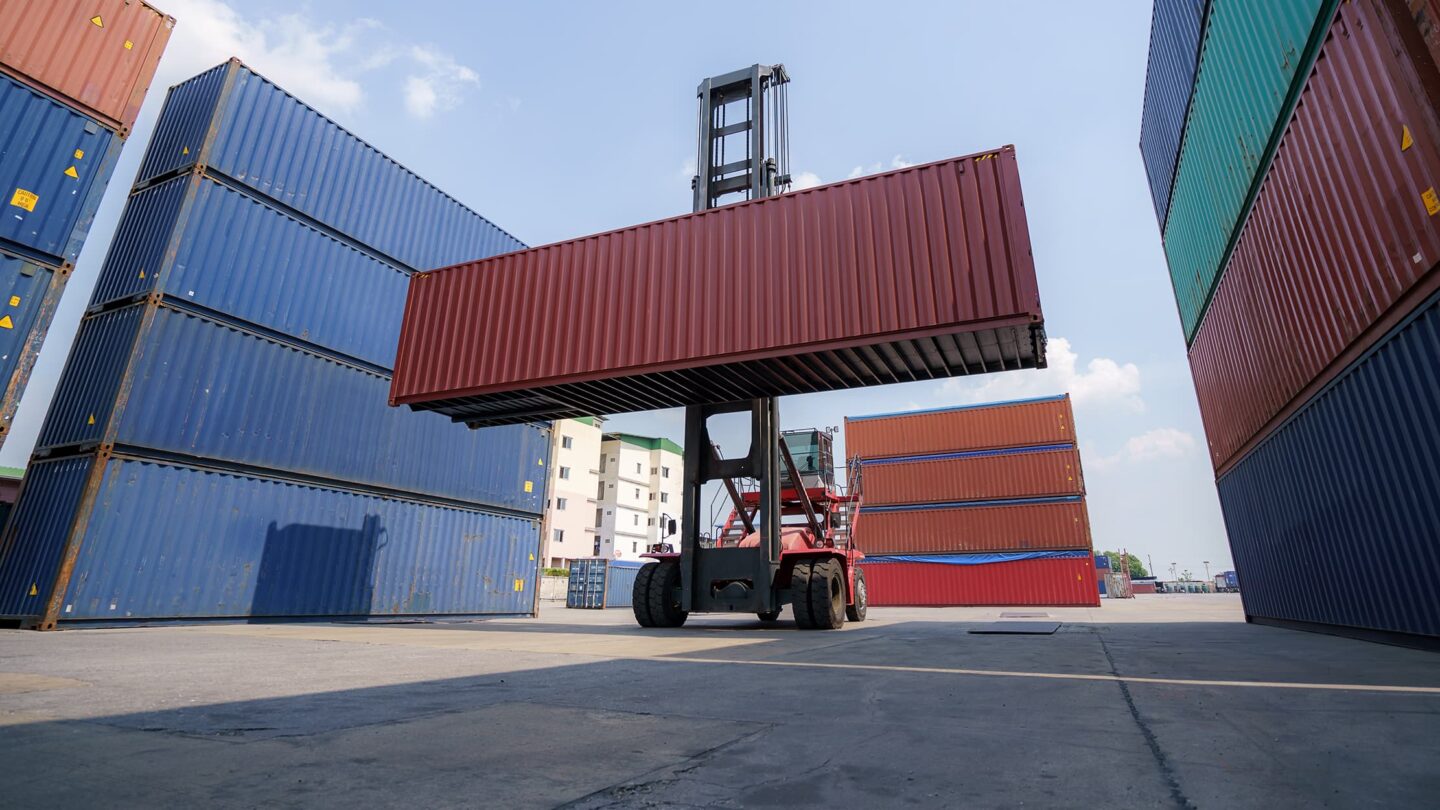Technology & Innovation
Artificial intelligence in logistics: How to make your processes more efficient
Learn how artificial intelligence in logistics can result in an improvement with how your supply chain functions and anomalies are managed.

Artificial intelligence (AI) in logistics is quickly becoming more accessible and affordable.
This is helping supply chain managers and logistics professionals find efficiencies, as well as creating opportunities for business growth and competitive advantage.
In this article, we look at how AI in logistics can improve your processes and the management of anomalies in your business.
Here’s what we cover:
- Simple processes and complex applications
- The challenge for artificial intelligence in logistics
- 3 process improvements using AI in logistics
- AI and managing anomalies
- Anomalies are loss-making
- Processing millions of invoices
- Putting AI to work with anomalies – what to consider
- Final thoughts on artificial intelligence in logistics
Simple processes and complex applications
In its simplest form, AI can support back office functions and processes through the detection of anomalies and exceptions, highlighting issues before they become bigger problems.
For more complex applications it provides 3PLs, shippers, and carriers with insights based on the analysis of supply chain data. This is becoming more important than ever as we learn the lessons of the pandemic).
IBM writes: “While no one can foresee what’s in store for tomorrow, we can work today on building a ‘smarter’ global supply chain.
“Organisations can leverage AI to help turn the unanticipated into the envisioned.”
Operationally, AI is at the heart of Intelligent Route Optimisation (IRO), helping logistics businesses co-ordinate resources and journeys cost-effectively, often in real time and far more efficiently than humans could ever achieve.
Improved process management means more accurate predictions and therefore fewer surprises.
Plus, the opportunity to improve end-user communications and customer service makes for solid relationship management.
The challenge for artificial intelligence in logistics
According to a logistics industry report from DHL and IBM, one of the biggest challenges and most underutilised assets in the industry is the high volume of structured and unstructured data.
Despite the fact that a survey conducted by Forrester found only 17% of respondents felt a lack of well-curated data to train AI systems was their biggest challenge, we must accept that the quality of data gathered and held is often of poor.
Chris Geiser, senior vice president of technology of marketing firm DCG ONE, said: “Understanding the mathematics and patterns will only get you so far.
The most important thing is to understand all your individual data sources.”
Enterprise resource planning (ERP) has the data and connects every operational part of the organisation to create a central and valuable data asset that will work effectively for AI success.
By understanding individual data sources by function, you can create accurate, complete, and consistent records.
This means you’ll be more likely to realise the full potential of AI and create new business opportunities.
3 process improvements using AI in logistics
To maximise the effectiveness of AI to your business, focus on harnessing it correctly with quality data, in alignment with your business goals.
Here are three things to be aware of.
1. Exploit underutilised data assets
Apply AI to the high volumes of data generated within supply chains to allow for analysis and insights that identify trends on where efficiencies can be realised.
2. Automate and accelerate processes
The aim here is to eradicate/minimise errors and generate costs savings.
An example is that of natural language processing (NLP) to ingest customs documentation across different formats.
By extracting relevant information and accumulating knowledge, declarations can be automated to support and complement the human element while creating efficiencies.
3. Predictive analytics that limit the unexpected
By applying AI to route optimisation and network management you can inform future planning.
DHL did this by developing a machine learning-based tool to predict air freight transit time delays for proactive mitigation.
Analysing 58 different parameters of internal data, this machine learning model now predicts increases/decreases on transit times up to a week in advance for real impact on effective resource management.
Along the way, be sure to establish a business metric for each solution (cost reduction, value creation, customer engagement, etc) in creating a significant quantitative impact, so you know what good looks like.
AI and managing anomalies
Logistics businesses understand the application of AI to typical industry problems such as route optimisation.
Not only is route planning something you instinctively understand, it’s also something computers can clearly do in real time that humans can’t.
By connecting data sources such as GPS trackers, weather information and traffic systems, for example, you can start to predict journey times on the fly.
You can plan resources better and maybe even tell your customers what time their delivery will show up. It’s a great application of AI.
But the benefit is only incremental – shave a few minutes off a journey and the time, fuel, wage and maintenance costs are similarly shaved – at best.
Anomalies are loss-making
More exciting, but much less talked about, is the application of AI to exceptions, anomalies and other things that go wrong. This help you either resolve them or prevent them from going wrong in the first place.
Exceptions are interesting because they are unbelievably expensive.
In today’s modern supply chains with wafer-thin margins, handling an exception is likely to cost more than the cost to serve in the first place.
Think of handling returns or dealing with baggage that has gone to the wrong destination. Or in the back office, financial and contractual errors that cost money or present compliance challenges.
Exceptions are loss-making, so reducing them can be a highly profitable use of tech.
Exceptions and errors are also hard for humans to spot – precisely because they are either mistakes (by definition, things we do without noticing) or circumstances that must be noted by a compliance or check manager who’s looking for a one-in-a-thousand occurrence.
Humans aren’t great at this, whereas AI is the increasingly smart assessor who never goes to sleep.
Processing millions of invoices
Unlike humans, AI’s judgement also doesn’t degrade with complexity.
A report from DHL in association with IBM says: “Logistics service providers often rely on vast numbers of third parties including common carriers, subcontracted staff, charter airlines and other third-party vendors to operate core functions of their business.
“This puts an increased burden on logistics accounting teams to process millions of invoices annually from thousands of vendors, partners or providers.
“Here, AI technologies like natural language processing can extract critical information such as billing amounts, account information, dates, addresses, and parties involved from the sea of unstructured invoice forms received by the company.
“Once the data is well-classified, an RPA [robotic process automation] bot can take it and input it into existing accounting software to generate an order, execute payment, and send the customer a confirmation email, all without human intervention.
“Consultancy firm Ernst & Young (EY) is applying a similar approach for detection of fraudulent invoices. EY’s fraud detection system achieves 97% accuracy and has been rolled out to over 50 companies.
“Similar logic can be applied to any business process with high-frequency repetitive tasks.”
AI cuts the human burden, spots errors effectively, and acts as an nonintrusive set of guiderails, keeping the business moving and solving problems without interrupting the day-to-day flow and rhythm.
Putting AI to work with anomalies – what to consider
To successfully deploy AI in anomaly assessments, focus on:
- Pattern and trend detection: AI systems must learn what good looks like, and therefore what bad looks like too, from your data lake.
- Event-driven occurrences: Most exceptions remain event-driven and detection regimes will reflect this. AI should become part of an existing set of processes.
- Working with suppliers: Collaborate and integrate with suppliers to see into their organisations and processes to detect issues early. Data sharing may be a contentious issue, but it’s essential. Anomaly detection on upstream transactions using AI is starting to show some of the most promising results in the sector.
Final thoughts on artificial intelligence in logistics
So, as you’ve seen in this article, AI has a key role to play in logistics as far as improving your processes and making them more efficient.
No matter whether you’re looking to adopt it to revamp your supply chain processes or manage anomalies, it pays to utilise AI in the right way.
Assess what you want AI systems to do and the problems you need to solve, adopt them in line with your business goals, and use the right metrics to measure efficiencies.
Editor’s note: This article was first published in September 2020 and has been updated for relevance.







Ask the author a question or share your advice